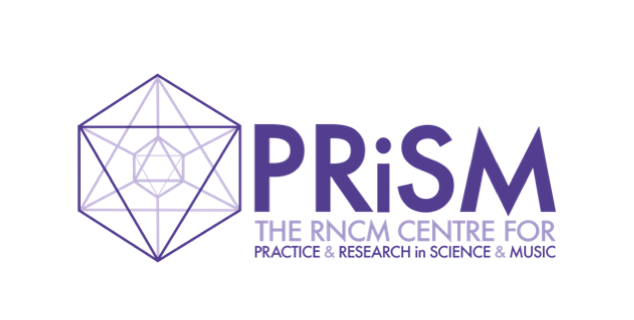Escape! and the PRiSM Oscillator
20 November 2020
Escape! and the PRiSM Oscillator
By Nina Whiteman and Christopher Melen
Introduction
Nina’s recent research explores ideas of lostness and entanglement through an ongoing series of maze pieces. With an emphasis on how performers interact with the notation and with each other, her work investigates multitextuality, performer choice, and geographical space as score. Nina has developed idiosyncratic labyrinthine notation in works such as House of Mazes (2017), and TOMB (2018), and her recent work for organ, electronics and audience – Escape! (2020) – utilises prescriptive graphic notation in a video score.
Nina approached PRiSM early in 2020 with the idea of making an app designed to facilitate audience interaction with Escape! Over the summer of 2020, Nina met regularly with Christopher Melen, PRiSM Research Software Engineer, discussing how users would interact with the interface as well as the app’s sonic capabilities. The new PRiSM Oscillator App was born!
In this article, Nina and Christopher write about their collaboration on the new PRiSM Oscillator App, designed to facilitate audience interaction with Nina’s composition Escape!
The code for the PRiSM Oscillator is available on GitHub here.
Escape!
Nina: Over the past few months I have had the pleasure of working with PRiSM’s Research Software Engineer Dr Christopher Melen, who has created a new app designed to enable audience interaction with my composition Escape!
Escape! is a work for organ, electronics, video, and audience commissioned by Lauren Redhead (organ) and Alistair Zaldua (electronics). The composition explores notions of lostness (geographical, cartographical, psychological) as performers navigate a video score, responding sonically to graphic symbols.
As the title suggests, there is a parallel with the Escape Room game phenomena, where groups of participants must solve clues to unlock the exit. The video comprises a series of quasi-architectural drawings, and within each of these ‘rooms’ a series of tasks must be completed, often under pressing time constraints.
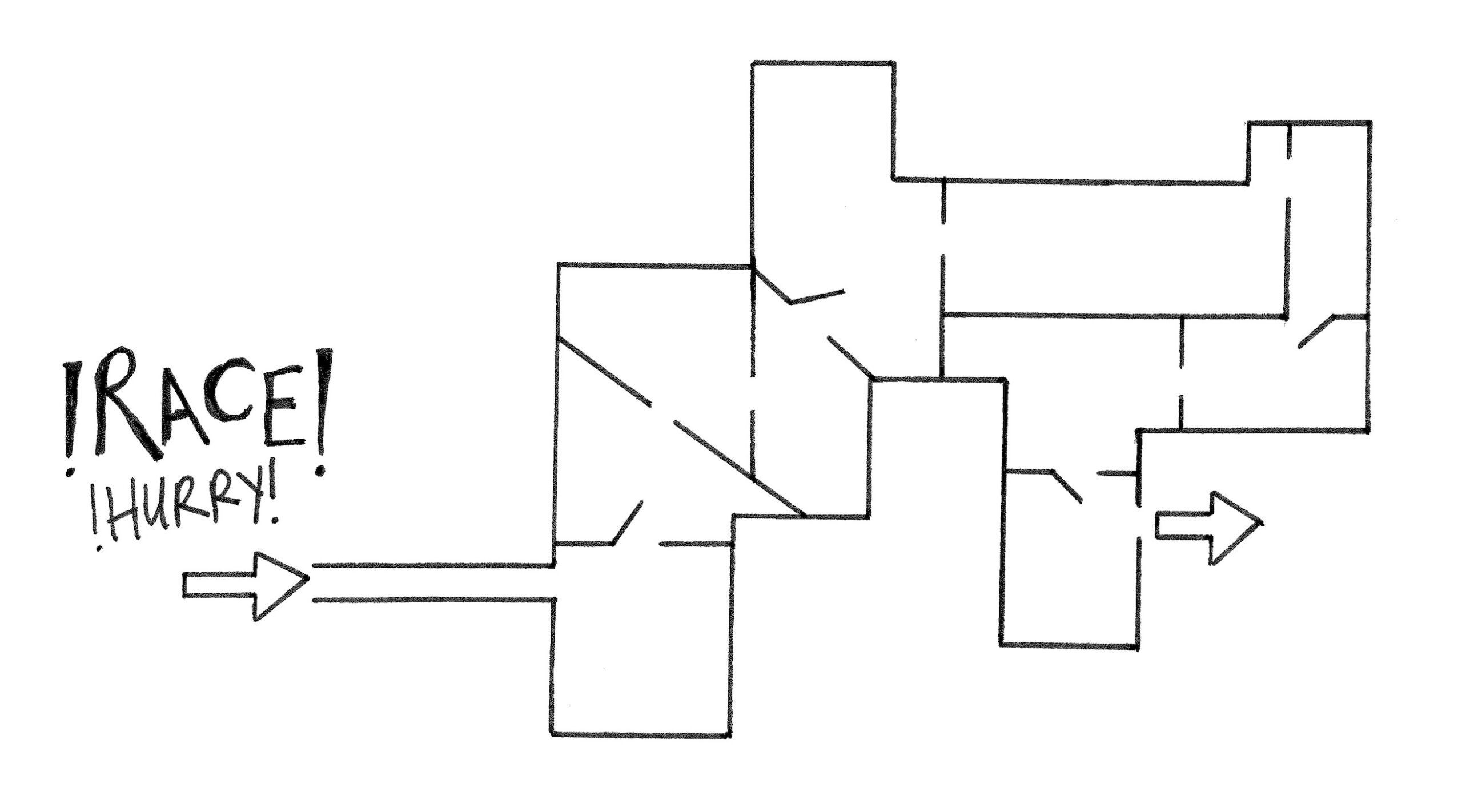
A room that performers race through in Escape!
Interaction between the two on-stage performers varies from racing, to following, to coordinating. The organ and electronics have comparable responses to the symbols: for example, an open doorway indicates an octave change, a narrow corridor the addition or removal of a tone, and a black hole a bass drone.
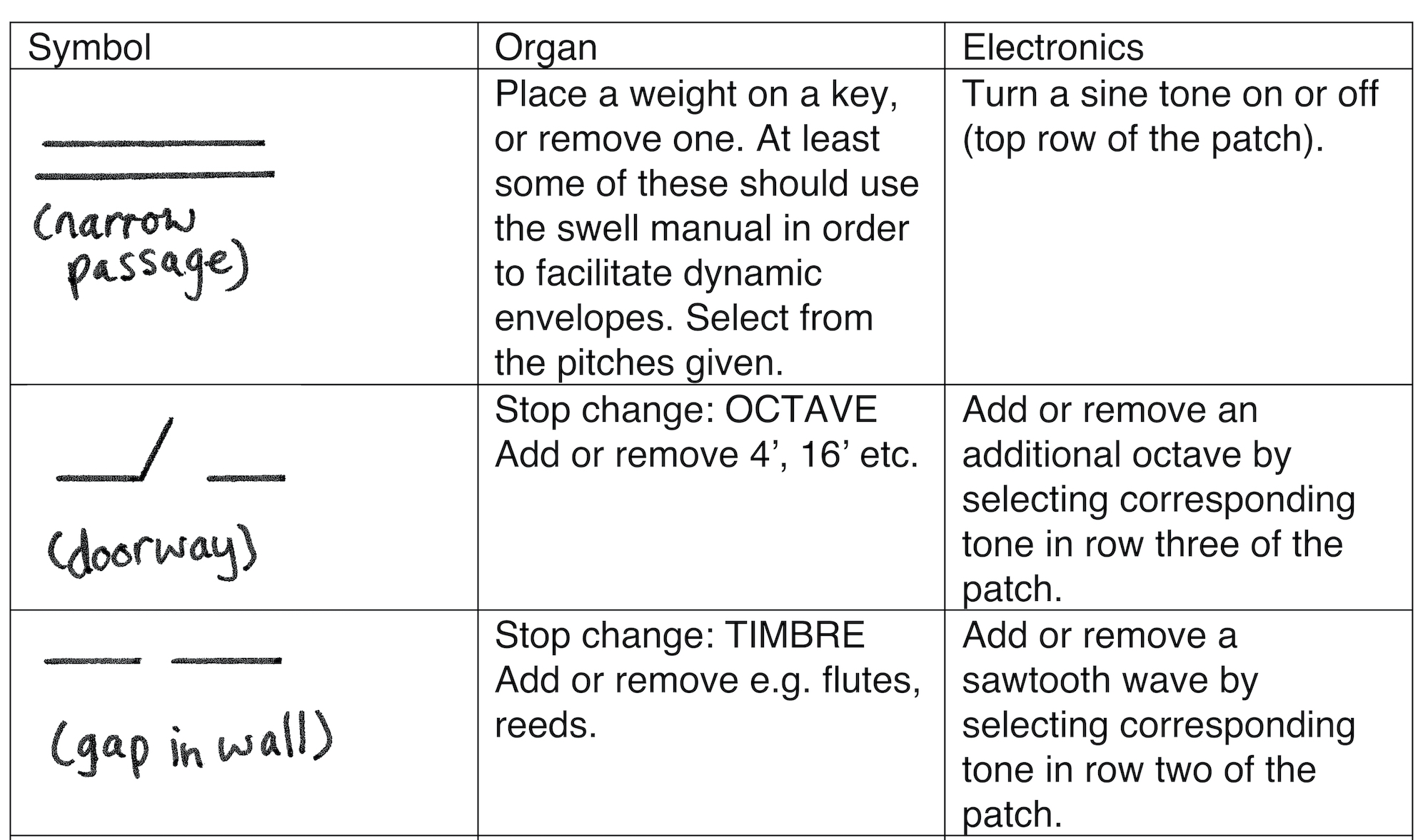
Example 2: Extract from the key to symbols for Escape!
The audience also interacts with the video score, responding to visual cues that instruct them to turn randomised sine tones on and off. This introduces an interesting spatial dimension to the work, creating localised sonic experiences. I hope that involving them in the performance and engaging them with the video notation, enables them to have a similar psychological experience to the organ and electronics performers. Audience members add and remove their sine tones at any point when they see the A+ and A- symbols on the screen.

Example 3: Audience symbols to add and remove a sine tone, as seen in the video score.
The PRiSM Oscillator App
Nina: Whilst there are many sine-tone generator apps available, none of them had some important features necessary for the audience interaction in Escape! This is where the collaboration with PRiSM arose in order to develop an app that was fit for this creative purpose. Specifically, the PRiSM Oscillator App allows audience members to generate random sine tones within a pre-set frequency range at the press of a button. This means that every time they press the play button, a new tone sounds, and the pitch of the tone will vary from one audience member to another, leading to localised clouds of random pitches being heard within the audience.
Christopher: The PRiSM Oscillator App targets the primary mobile platforms – Apple’s iOS and Google’s Android – and is available for installation on any device supporting these operating systems (iPhone/iPad, or any Android device). Recent trends in app development have seen a bridging of the gap between the web and native platforms, with frameworks such as Capacitor enabling web applications to run natively on mobile devices. Despite running natively on iOS and Android the PRiSM Oscillator App is written exclusively using web technologies such as JavaScript, HTML and CSS.
At its core, the App utilises FaceBook’s React UI library, which encourages a modular approach to the management of application state, logic and user interaction. The App was designed to be simple and easy to use, with little to no configuration required, and with a clean, minimalist appearance. The latter was achieved using Material UI, a JavaScript library which implements Material Design, Google’s UI design language.
On opening the PRiSM Oscillator, you see a simple canvas-like interface, displaying a waveform at a frequency randomly selected by the app.
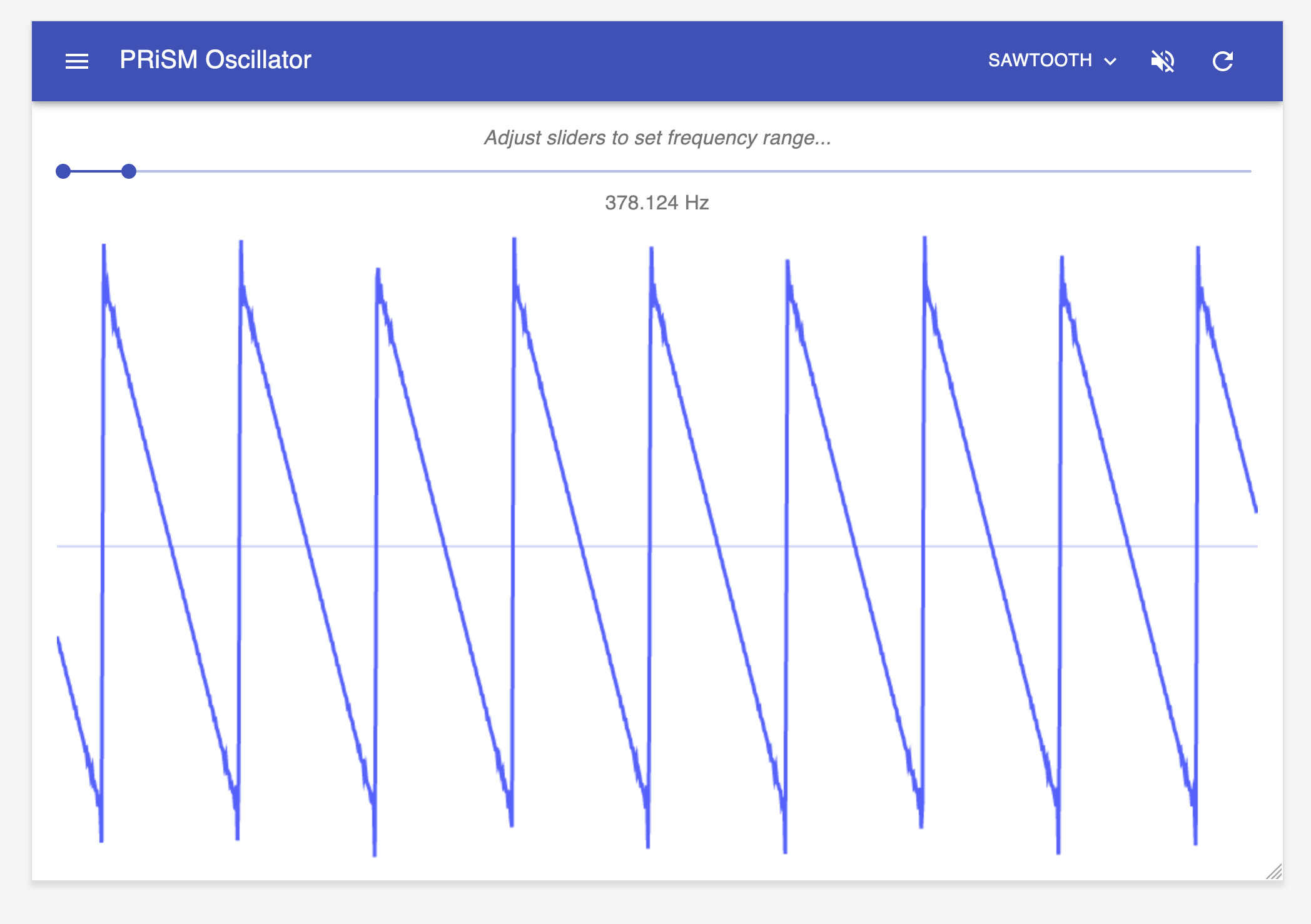
The PRiSM Oscillator opening screen
A number of simple controls are present at the top of the screen, on the right of the menubar. The first of these controls, a dropdown menu, is used to select the type of waveform displayed (Sine, Sawtooth, Square or Triangle).
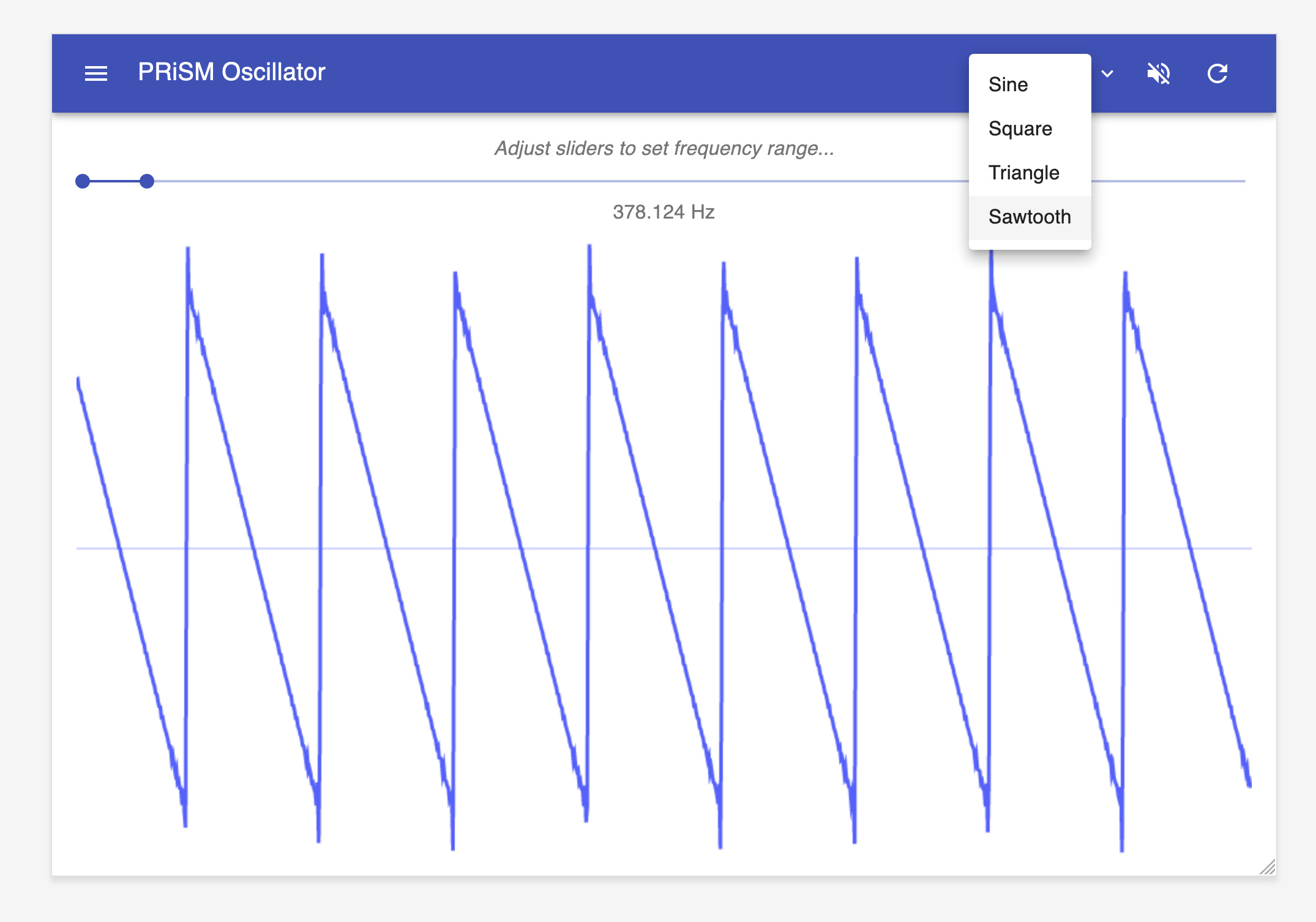
The PRiSM Oscillator wave type selection drop-down menu
Making a new selection immediately changes the waveform, maintaining the frequency. Audio output is initially muted, but can be toggled on and off using the ‘speaker’ button to the right of the waveform selector. A new, random frequency can be generated using the ‘refresh’ button, at the very right of the menubar. Below the menubar is located a set of slider controls, which can be used to restrict the range for generated frequencies.
The PRiSM Oscillator App is an open source project, all related code is publicly available at https://github.com/rncm-prism/sine-generator. It is an ongoing project, with numerous additional features envisaged for the future, including the ability for users to build their own oscillators from component waveforms of different types, and functionality allowing the App to interface with external applications.
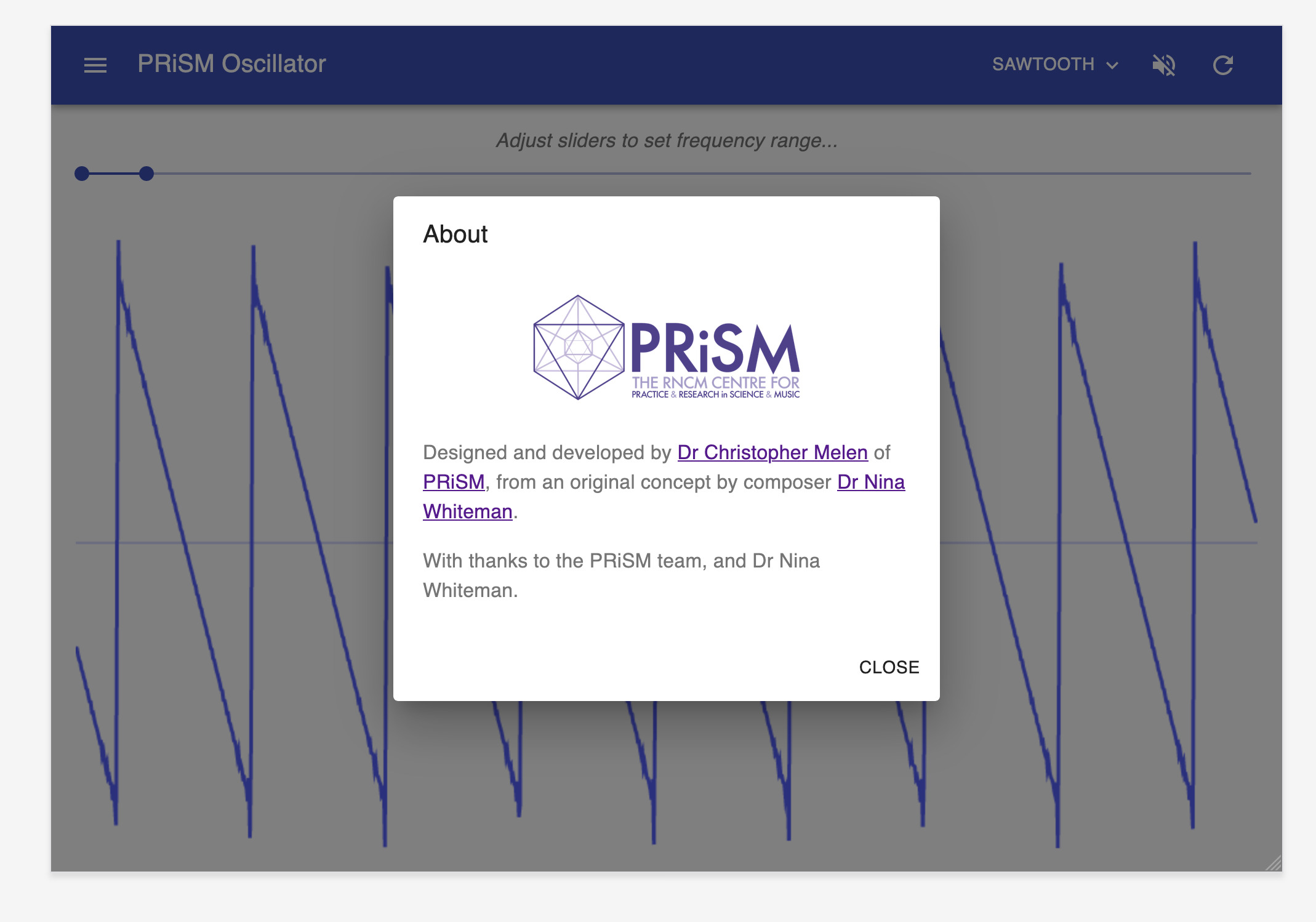
The PRiSM Oscillator App credits
Nina: It’s been a fascinating experience working with Christopher. He has added more features to the App, including an option to change the waveform type from sine to sawtooth or triangle waves. These extra features (as well as the simplicity of the app as a concept and as a user experience) make the App suitable for use in many other creative as well as educational settings. It’s extremely exciting that the PRiSM Oscillator App is available for everyone to experiment with and enjoy!
We hope to be able to present Escape! with a live audience performing using the App soon. In the meantime, we are working on a recorded version for YouTube, where audiences can join in using the App from wherever in the world they may be watching.
Credits
Escape! was commissioned by Lauren Redhead and Alistair Zaldua with funds from Goldsmiths, University of London and first performed by them at Ideas of Noise festival (Birmingham) and Electric Spring festival (Huddersfield) in February 2020. I am extremely grateful to Lauren, Alistair, and Christopher for their generous and creative contributions to the collaborative process. You can watch a video of Lauren, Alistair and me discussing the collaboration early on in the process here.
The composition extends my work with prescriptive graphic notation and ideas originating in maze and labyrinth design initiated in House of Mazes (2017), which you can view here.
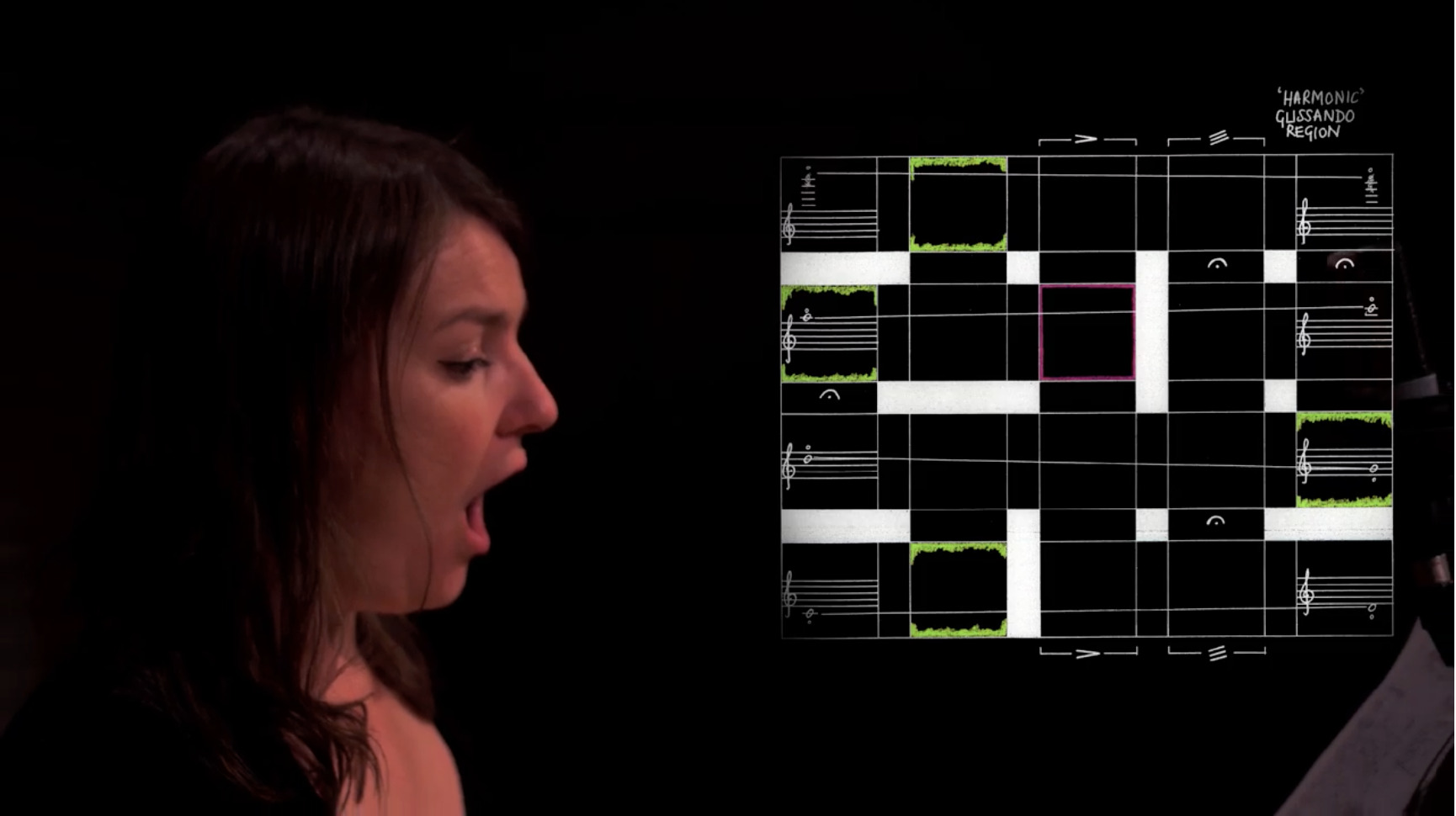
An image from House of Mazes (2017), singer Nina Whiteman
About the Authors
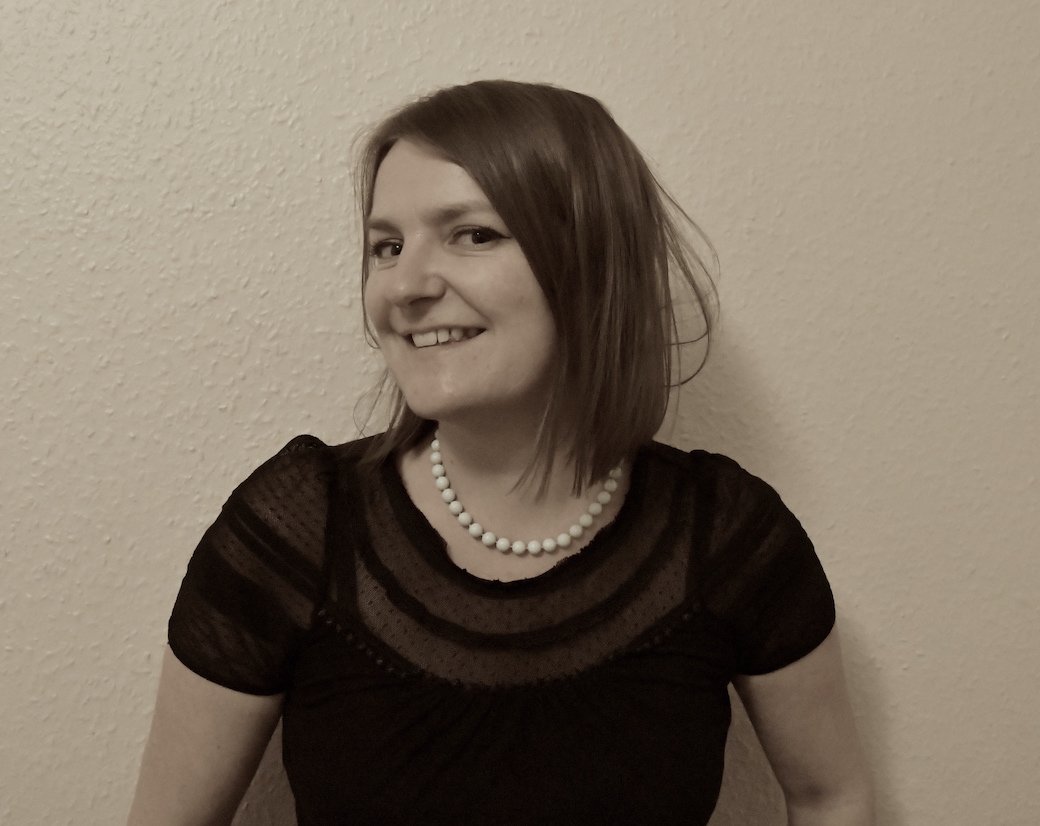
Dr Nina Whiteman
Nina Whiteman is a composer and singer who has worked internationally with ensembles including the BBC Philharmonic, TOEAC, Manchester Camerata, Distractfold, Quatuor Danel, and Psappha. She collaborates frequently with artists in a range of disciplines and is active as an improviser (voice and electronics). Nina is founding Artistic Director of Manchester Contemporary Youth Opera and co-director of Trio Atem, and teaches at the RNCM, University of Manchester, and Royal Holloway, University of London.

Dr Christopher Melen
Dr Christopher Melen is PRiSM’s Research Software Engineer, designing and developing the tech that underpins our research and collaborations.

